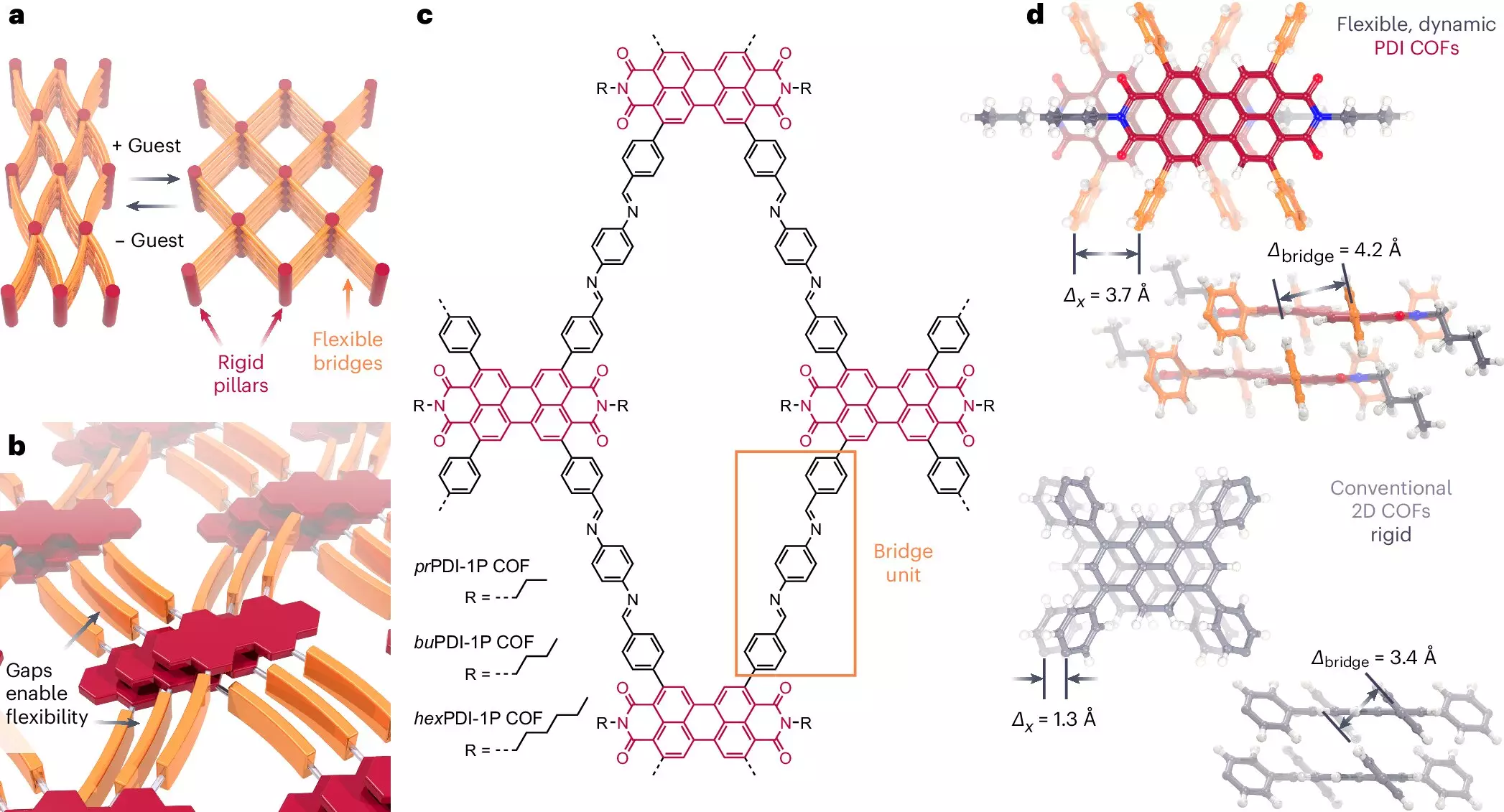In a groundbreaking advancement in the realm of material science, Dr. Florian Auras and his team at Dresden University of Technology (TUD) have made significant strides in the development of covalent organic frameworks (COFs). These innovative materials, characterized by their ordered porous structures and the flexibility to manipulate their properties, have emerged as a beacon of potential within the scientific community. This new research showcases a transformation in how we perceive and utilize organic materials, with the ability to control functionality at the molecular level, which is not just important but revolutionary.
The Anatomy of Dynamic COFs
Traditionally, research surrounding COFs has concentrated on rigid configurations that limited their adaptability. However, this research introduces a novel design strategy focused on dynamic two-dimensional COFs, described metaphorically as molecular sponges. What sets these materials apart is their reversible nature; they can change from a compressed state to one that is porous, allowing for unprecedented control over their structure and properties. This flexibility paves the way for applications that were previously unimaginable, especially in fields requiring dynamic responses such as electronics and information technology.
Dr. Auras highlights the critical objective of this study: to infuse an appropriate degree of flexibility into the traditionally rigid frameworks. By employing specific solvents, these materials can alter their molecular geometry, triggering changes in their optical properties, which includes variations in color and fluorescence. This level of manipulation enriches the potential applications of COFs, expanding their horizons far beyond classical implementations.
Implications for Future Technologies
The implications of developing switchable COFs extend beyond academic curiosity; they hold substantial promise for technological advancements. The capacity to create stimuli-responsive polymers positions these materials as integral components in the future of quantum computing and data storage. The controlled switching of states could lead to breakthroughs in energy-efficient technologies and enhance the capabilities of sensors and catalysis.
Furthermore, as we increasingly integrate advanced materials into our technological framework, the demand for versatility and precise control grows. These dynamic COFs could serve as a cornerstone for next-generation devices with the potential for immediate, reversible adjustments to their properties, something that static structures simply cannot achieve.
Dr. Auras’s work exemplifies the profound impact that innovative material design can have on technology and science as a whole. The remarkable ability to manipulate organic frameworks has opened new avenues not only for research but also for practical applications that could redefine everyday life. The pursuit of push-button technology based on these findings presents an exhilarating frontier in the world of material science.

